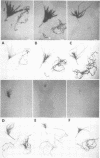Abstract
The effect of specific levels of induced water stress on the root exudation of 14C from 9-month-old and 12-month-old ponderosa pine (Pinus ponderosa Laws.) seedlings was examined. Polyethylene glycol (PEG-4000) was used to decrease root solution water potentials by 0, −1.9, −2.6, −5.5, −9.6 and −11.9 bars in either aerated 0.25X Hoagland's nutrient solution or aerated distilled water.
Assimilation of 14CO2 by plants under stress and subsequent translocation of 14C label to the roots were both inhibited by a decrease in substrate water potential. Six days after 14CO2 introduction essentially no 14C was detected in the roots of plants maintained at solution potentials of −5.5 bars or below. In subsequent studies 14CO2 was introduced 4 days prior to induction of stress. This allowed sufficient time for distribution of 14C label throughout the root system.
Root exudation of 14C-labeled sugars, amino acids, and organic acids from plants in nutrient solution showed an increase from 0 to −1.9 bars, a decline from −1.9 to about −5.5 bars, and then an increase again from −5.5 to −11.9 bars. As substrate potential decreased, sugars as a percentage of total exudate increased, organic acids decreased and amino acids showed a slight decrease. Marked changes in percentages occurred between 0 and −2.6 bars. The exudation of sugars, amino acids, and organic acids from plants in distilled water showed similar trends in response to water stress as those in nutrient solution, but the quantity of total 14C exuded was greater.
Full text
PDF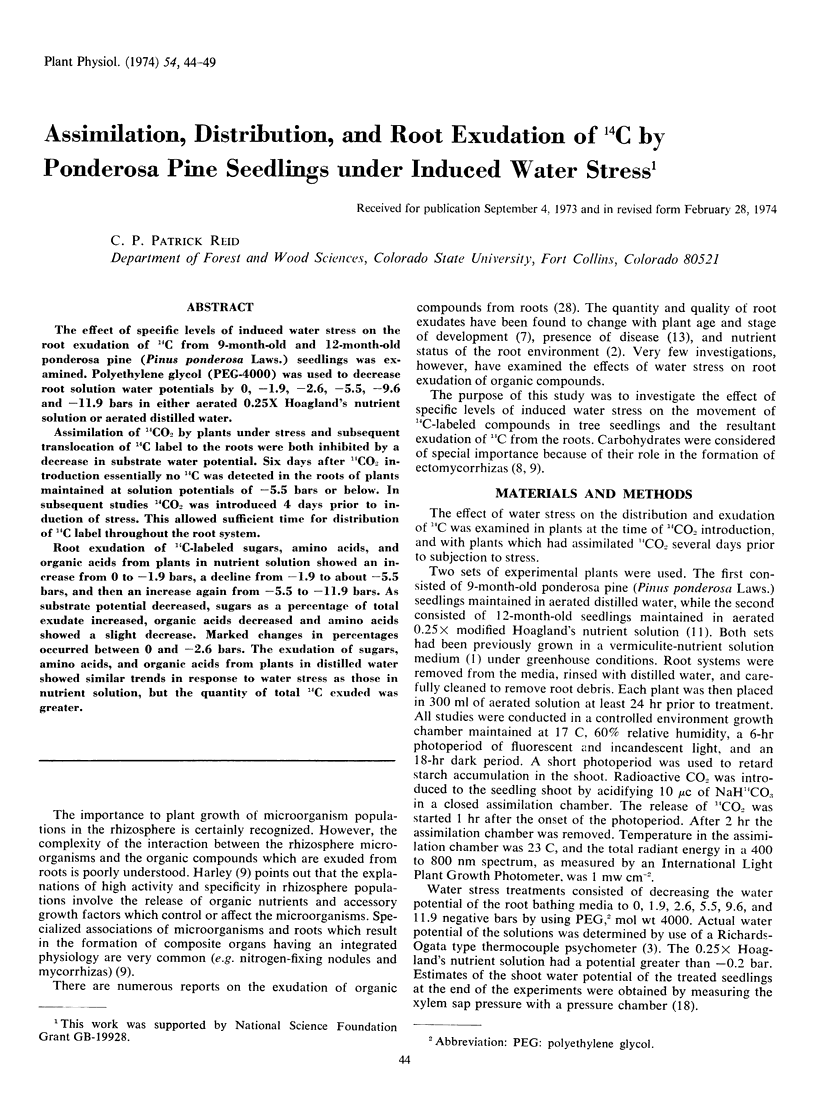
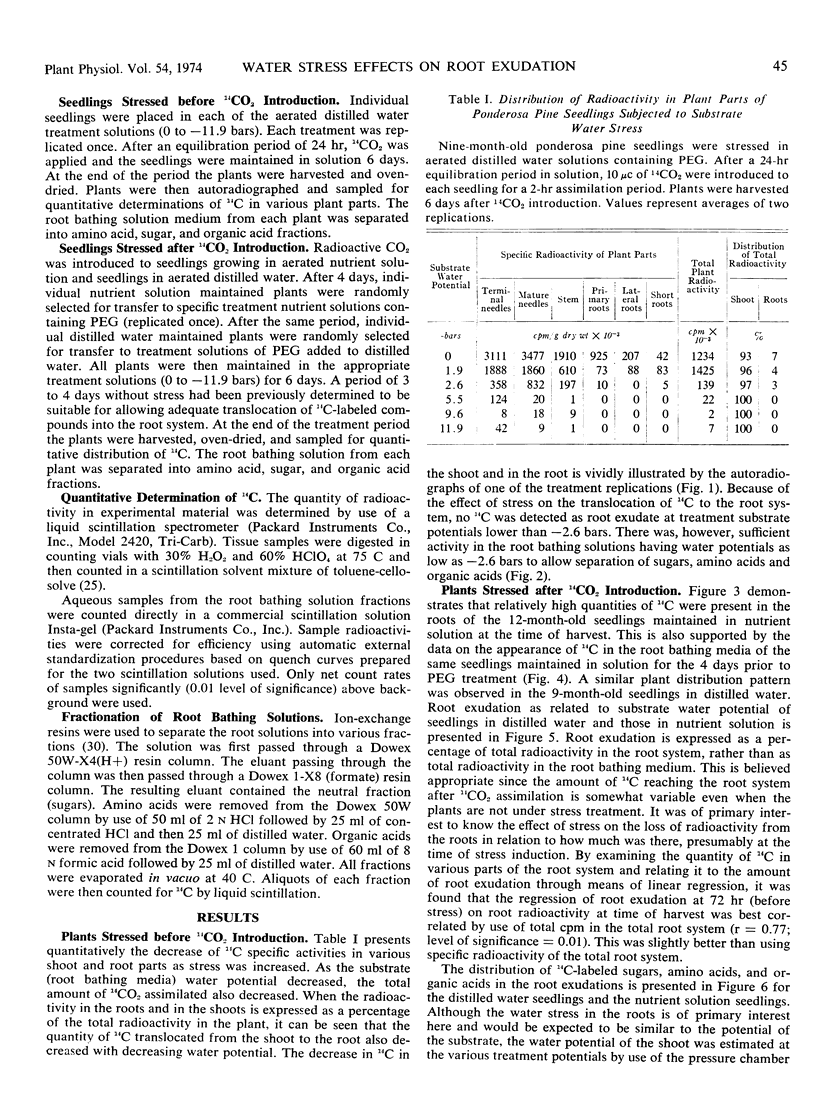
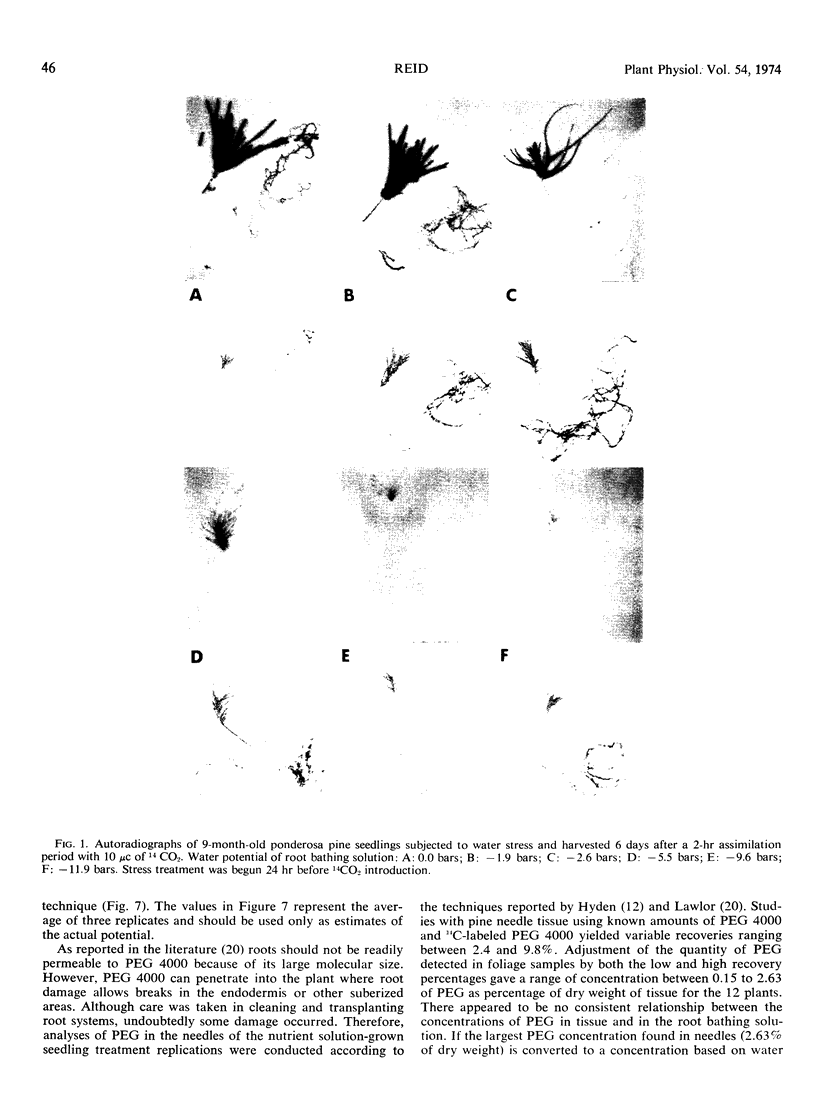
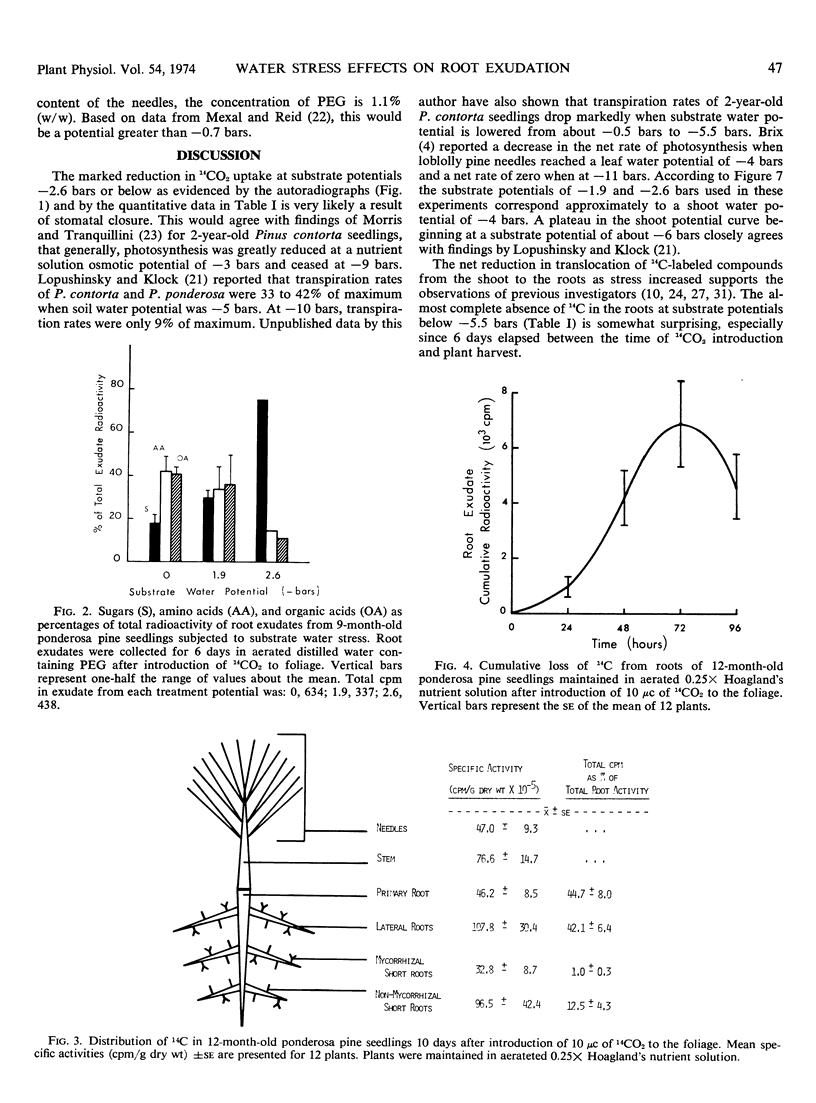
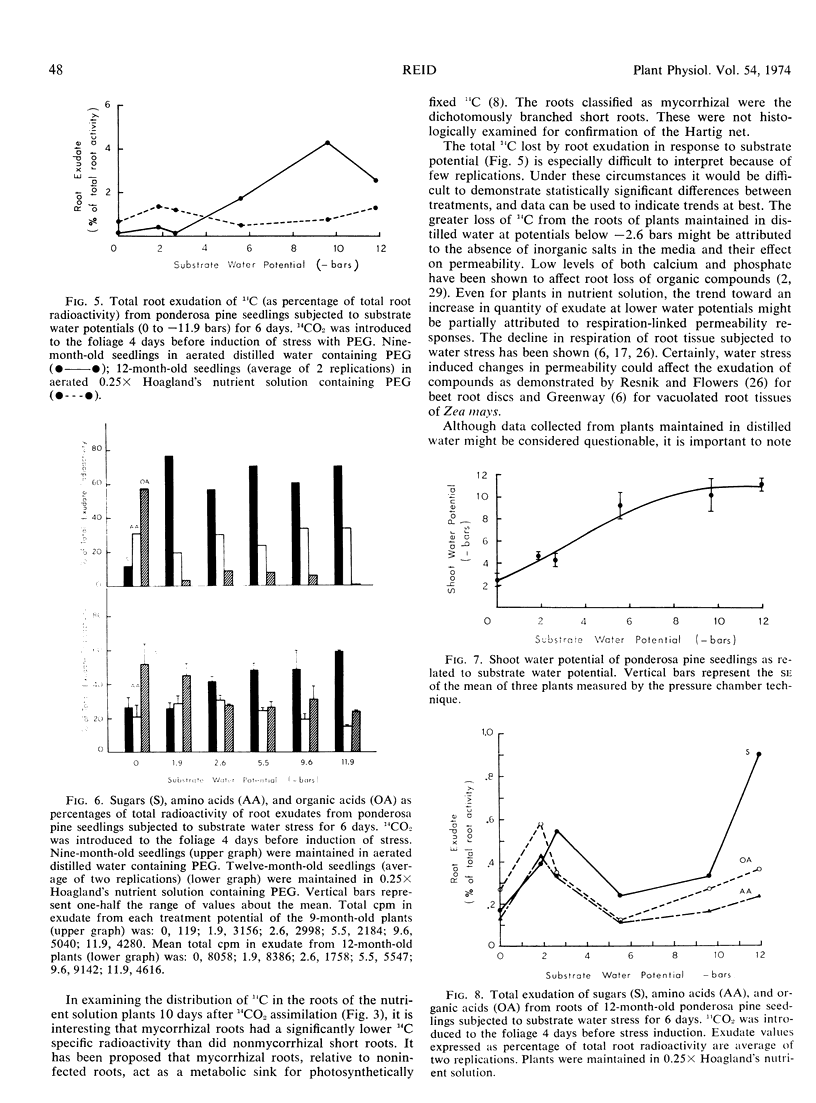
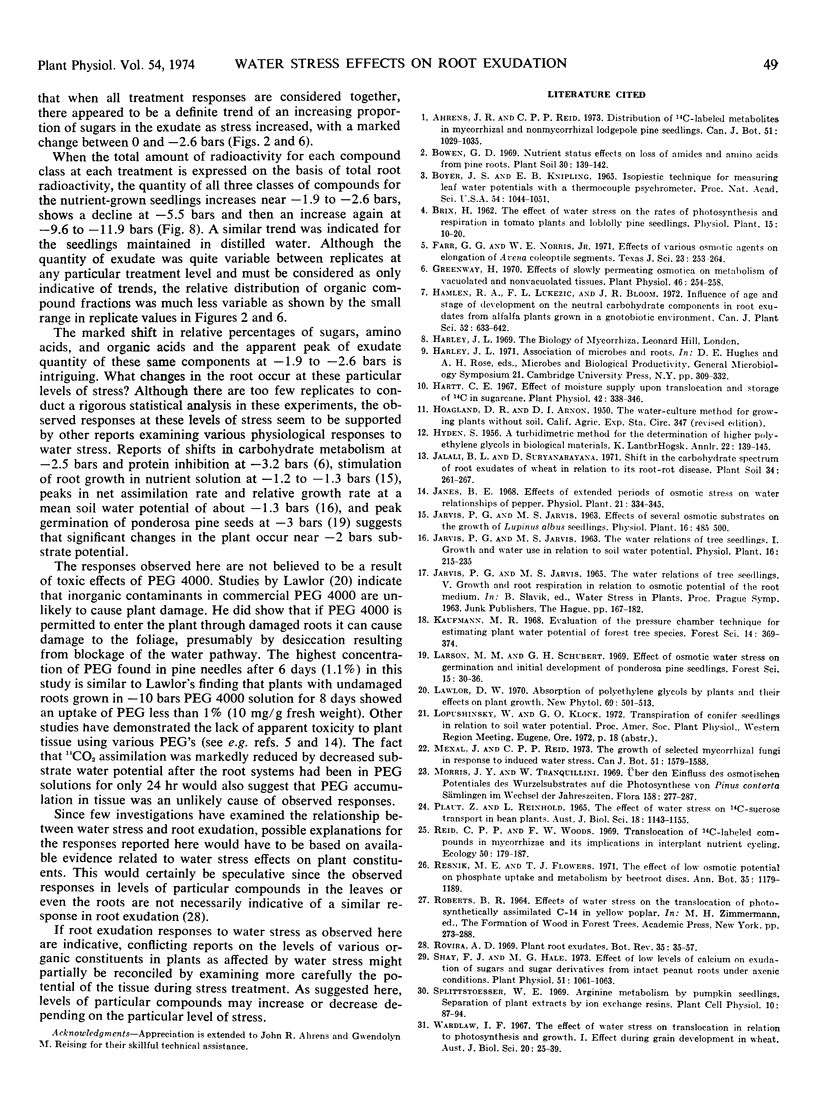
Images in this article
Selected References
These references are in PubMed. This may not be the complete list of references from this article.
- Greenway H. Effects of slowly permeating osmotica on metabolism of vacuolated and nonvacuolated tissues. Plant Physiol. 1970 Aug;46(2):254–258. doi: 10.1104/pp.46.2.254. [DOI] [PMC free article] [PubMed] [Google Scholar]
- Hartt C. E. Effect of Moisture Supply upon Translocation and Storage of C in Sugarcane. Plant Physiol. 1967 Mar;42(3):338–346. doi: 10.1104/pp.42.3.338. [DOI] [PMC free article] [PubMed] [Google Scholar]
- Shay F. J., Hale M. G. Effect of Low Levels of Calcium on Exudation of Sugars and Sugar Derivatives from Intact Peanut Roots under Axenic Conditions. Plant Physiol. 1973 Jun;51(6):1061–1063. doi: 10.1104/pp.51.6.1061. [DOI] [PMC free article] [PubMed] [Google Scholar]
- Twente J. W., Twente J. A. Regulation of hibernating periods by temperature. Proc Natl Acad Sci U S A. 1965 Oct;54(4):1044–1051. [PMC free article] [PubMed] [Google Scholar]



